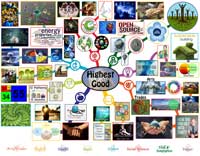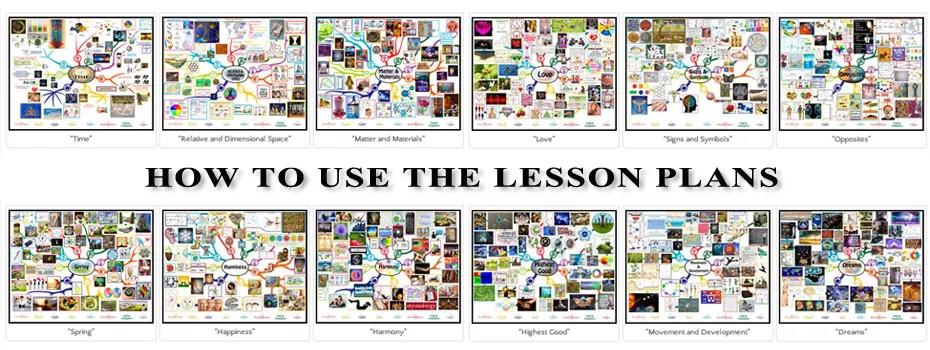
Lesson Plans How-to
This page teaches how to use the Lesson Plans for Life using the following sections:
- What are the Lesson Plans for Life
- Lesson Plan Components Overview
- Why Use the Lesson Plans for Life
- How to Create Your Individualized Lesson Plans
- Examples for Combining the Lesson Plans for Life with Other Program Components
- What’s Next/Coming Later for the Lesson Plans for Life
- Resources
RELATED PAGES
EDUCATION OVERVIEW | GLOBAL TRANSFORMATION | OUR OPEN SOURCE PURPOSE
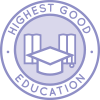
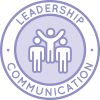
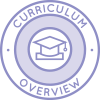
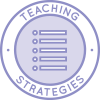
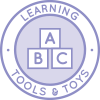
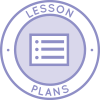
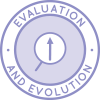
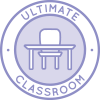
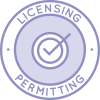

CLICK THESE ICONS TO JOIN US THROUGH SOCIAL MEDIA
WAYS TO CONTRIBUTE TO EVOLVING THIS EDUCATION PROGRAM WITH US
SUGGESTIONS | CONSULTING | MEMBERSHIP | OTHER OPTIONS
WHAT ARE THE LESSON PLANS FOR LIFE
 The Lesson Plans for Life are weekly theme-based lesson plan guides for designing what an Educator and Learner will focus on for one week. When used as described on this page, each of these lesson plan guides can be used to produce a lesson plan for teaching all subjects, to all learning levels, within the context of the central theme. They can be used in any learning environment as stand-alone lessons or as part of the complete program.
The Lesson Plans for Life are weekly theme-based lesson plan guides for designing what an Educator and Learner will focus on for one week. When used as described on this page, each of these lesson plan guides can be used to produce a lesson plan for teaching all subjects, to all learning levels, within the context of the central theme. They can be used in any learning environment as stand-alone lessons or as part of the complete program.
To make an even more comprehensive learning experience, combine the lesson plans with the Teaching Strategies for Life, Curriculum for Life, core curriculum (to meet national and state standards), and the 7 foundational open source subject resources:
NOTE: All lessons were designed with the goal of expanding creativity and critical thinking while also teaching all subjects. With this in mind, on everything other than the facts of each subject, the emphasis should be placed on enhancing imagination and expanding an individual’s capability to formulate an argument or rationale, rather than on the degree to which the instructor feels the answer/presentation/project is specifically correct or incorrect. What is more important is the reasoning, ability to defend that reasoning, and process used to create it.
We are in the process of designing a full year of these lesson plans. Click the image below to visit the index:
LESSON PLANS COMPONENT OVERVIEW
Here is an overview of the primary components of each lesson plan. Detailed descriptions for each letter are below the image. The lesson plan shown is with the central theme of “Highest Good.”

The Components of the Lesson Plans
A: LESSON PLAN MINDMAP
Each lesson plan mindmap is an overview and visual representation of the foundations of each lesson plan. Use it to initiate an Educator/Learner conversation about the central theme and its relationship to all the subjects. Ask questions like:
- What images are you drawn to?
- What branches of the mindmap are you drawn to and why?
- What image do you think best represents the central theme and why?
- What do you think _______ image means in the context of the central theme?
- If you were to imagine a lesson based on _______ image, what would it be?
- What image would you add or remove from this branch/subject and why?
Use the answers you receive to guide and inspire your lesson plan design. You can also use the mindmaps as standalone lesson plan creation tools, generating your own lessons using the pictures as creative inspiration with or without the lesson plans.
B: SUBJECT ICONS
The subject icons are to take you directly to each subject within the page:
Clicking these icons will take you to the specific subjects on each lesson plan page
C: OTHER LESSON PLAN COMPONENTS
Each lesson can be combined with any one or more of the other components of the education program. Here’s how each one works specifically with the Lesson Plans for Life component:
 | Foundations of Being: Combine with this component to improve both Educator and Learner communication and leadership skills when teaching, collaborating on, and executing a lesson plan. A good way to start is to pick just one area or skill from this page and focus on integrating that area or skill into the lesson plan for the entire week. |
 | Curriculum: Use this component to broaden subject concepts and stimulate new ideas when individualizing a lesson plan with a Learner. The areas within this component are in many cases interchangeable with the related content suggested in the lesson plans. If you’d like to change or diversify any part of a lesson plan, exploring the Curriculum for Life is a great place to start. |
 | Teaching Strategies: Use these strategies as ideas for combining the different sections of a lesson plan. They can also be used for ideas on how to make learning individual sections more fun and interesting. A good way to start with this component is for the Educator and the Learner to first pick the bullet points they want to focus on, then visit the Teaching Strategies for Life to find the strategy that you both feel would best combine and/or enhance the bullet points you’ve chosen. |
 | Learning Tools and Toys: Use this component for ideas about teaching and learning tools and toys that can be integrated into the lesson plans. A good way to start with this component is to look at the list as a path to thinking about what learning and teaching resources you already have that you can use. You can also use the list to stimulate ideas for tools and toys to add to your current “learning toy box.” |
 | Lesson Plans for Life: This is the lesson plan archive of all completed lesson plans, as well as the lesson plans we’re still working on. When finished, this archive will contain enough lesson plan outlines to provide stimulating and unique educational structure for all learning levels, from pre-school through adulthood. |
 | Evaluation and Evolution: This component is designed to create a collaborative learning and teaching environment that promotes growth for both the Learner and the Educator. A good way to start using this component with the lesson plans is to create a Learner/Educator “Growth Portfolio” where you both record your experience with each lesson plan and discuss how you can cooperatively improve that experience for one another. |
 | The Ultimate Classroom: This component is for people interested in creating a complete learning environment. A good way to start with this component is to look at it as a way to stimulate ideas for improving/enhancing whatever your current learning/teaching environment is. A little conscious planning followed by even small investments of time and energy into creating an environment more engaging, interesting, and fun can go a long way. |
Visit the “How to Use the Education for Life Program” page for additional details on each component and how it works with each of the other components. See the “Examples of Combining the Lesson Plans for Life with Other Program Components” section at the bottom of this page for specific examples for how to combine them with the lesson plans.
D: LINKS FOR MAKING SUGGESTIONS AND HELPING
One Community is a global collaborative of volunteers creating open source tools, tutorials, and resources for all aspects of sustainable living. Use these links to make suggestions, join our team, and/or see how to help in other ways:
SUGGESTIONS | CONSULTING | MEMBERSHIP | OTHER OPTIONS
E: COMPREHENSIVE SUBJECT “MOLECULE” OUTLINES
The subject molecules cover all aspects of the 8 subjects: Art/Music & Trades, English, Health, Math, Science, Social Sciences, Technology & Innovation, and Values. They start with the easiest and broadest concepts near the center and increase in difficulty and specificity as you move toward the outer rings. They can be used with the lesson plans to stimulate ideas and/or printed out and checked off as you go to make sure all aspects of a subject are comprehensively covered.
F: CURRICULUM OVERVIEW PAGES
Use these links to directly access each of the 12 curriculum pages. Read these pages in conjunction with the lesson plans to broaden subject concepts and stimulate new ideas. The specific subject suggestions within the curriculum pages are in many cases interchangeable with the related content suggested in the lesson plans. Combining the lesson plan ideas with the curriculum for life broad-concept expansions, and the specificity found in the subject molecules described in “E” above, is enough for a creative person to easily expand any single lesson plan theme to offer unique and interesting lessons for a whole month or more.
These icons also link directly to each of the 12 curriculum pages:
CLICK THESE ICONS FOR A COMPLETE PAGE ON EACH AREA OF FOCUS
G: THE LESSON PLANS
The lesson plans sections are the foundation of each lesson plan page. They are divided into subjects and the areas within each subject are often further divided into sections specific to the subject (ex: Earth Science, Life Science, Physical Science) and/or themes that progress a lesson plan concept from its simplest form to college-level educational material.
Within each section, the lesson ideas are color coded from red at the top to violet at the bottom. These color codes are to avoid categorization by age and/or grade so that all lessons can be used to support both the areas where a learner is strong as well as areas where more work may be needed. Choosing lesson suggestions from multiple levels is both encouraged and recommended.
For those who absolutely need an age guide, you can use this one: Red could be Pre-school – 1st grade, Orange could be 2nd – 4th grade, Yellow could be 4th – 6th grade, Green could be 7th – 8th grade, Blue could be 9th – 10th grade, Indigo could be 11th – 12th grade, and Violet could be considered “advanced classes” and/or college-level material. Still, we don’t feel these grade designations are really accurate tools to use since almost everyone is going to have different levels of proficiency in different subjects. It is therefor suggested that any Learner wanting to do any color should be allowed (and encouraged) to do so as long as the Educator feels confident in their own (the Educator’s) ability to then modify that color’s content to fit the experience level of the Learner.
By allowing flexibility like this within the lesson design, subjects that Learners are strong in (and probably enjoy more) can be used as foundations to help them learn other subjects. It also allows unhindered progress in areas a Learner wishes to focus on while also including custom designed and ability-appropriate challenges in any areas a Learner may need help in.
Ultimately, what the lesson plan sections come down to is maximum flexibility to adapt and combine them to specifically meet the needs of individual Learners and Educators. Examples of this are below.
H: LESSON PLAN IMAGES
The lesson plan images below the mindmaps and on the left of the various subject bullet points are graphics that we feel represent the section they correlate with under their respective subjects. You can use them to reference the related sections in the mindmaps.
WHY USE THE LESSON PLANS FOR LIFE
 The Lesson Plans for Life are designed for maximum lesson plan design flexibility. Subjects Learners are strong in (and probably enjoy more) can be used as foundations to help them learn other subjects. This is done in a way that also promotes and supports unhindered progress in these areas a Learner enjoys focusing on while including custom designed and ability-appropriate challenges in any areas a Learner may need help in.
The Lesson Plans for Life are designed for maximum lesson plan design flexibility. Subjects Learners are strong in (and probably enjoy more) can be used as foundations to help them learn other subjects. This is done in a way that also promotes and supports unhindered progress in these areas a Learner enjoys focusing on while including custom designed and ability-appropriate challenges in any areas a Learner may need help in.
These lesson plans, when used for maximum benefit, can require a lot more interaction and hands-on involvement between Educators and Learners but the growth for both parties is significantly greater than traditional models. That said, they can still be used in any environment, even environments like Private or Traditional Schools that may not have high enough Educator to Learner ratios to be as hands on as recreational and/or homeschooling applications. We discuss all three of these below.
RECREATIONAL APPLICATION
 Using the Lesson Plans for Life in recreational learning environments is one of the simplest and quickest ways to start using them. In these environments, both the mindmaps and lesson plan bullets can be used independently or together to stimulate creativity for both Learners and Educators. Application is as simple and easy as reading the complete page and choosing the ideas that resonate most with your goals and teaching/learning environment.
Using the Lesson Plans for Life in recreational learning environments is one of the simplest and quickest ways to start using them. In these environments, both the mindmaps and lesson plan bullets can be used independently or together to stimulate creativity for both Learners and Educators. Application is as simple and easy as reading the complete page and choosing the ideas that resonate most with your goals and teaching/learning environment.
Once you’ve done that, the imagery and ideas on the page can be turned into complete lesson plans of your own, used as ideas for discussion or debate, and/or used as foundations or components of detailed papers, art projects, or other presentations. Combine them with the Teaching Strategies component for even more variety and ideas for applications in this type of setting.
ACTION ITEM SUMMARY
- Choose a lesson plan from the Lesson Plans page
- Read the entire page and choose the ideas that you find most interesting for your teaching/learning environment and goals
- Use what you see as a foundation or starting point for creating your own lesson plans, discussions, debates, papers, art projects, or presentations
- Visit the Teaching Strategies page if you’d like additional ideas for fun and different ways to teach and/or combine the concepts you’ve selected
HOMESCHOOLING APPLICATION
 Using the Lesson Plans for Life in homeschooling settings is arguably one of the best ways to get the most benefit from them. In these environments, the ratio of Educators to Learners is typically high enough to support the mutually beneficial collaboration that is intended when both parties have the time and availability to fully engage the teaching/learning process.
Using the Lesson Plans for Life in homeschooling settings is arguably one of the best ways to get the most benefit from them. In these environments, the ratio of Educators to Learners is typically high enough to support the mutually beneficial collaboration that is intended when both parties have the time and availability to fully engage the teaching/learning process.
Start by reading this whole page to understand how to collaboratively customize the lesson plans. Next, we’d suggest also reading the Education for Life How-to page to decide if you’d like to include any other components like the Foundations of Outstanding Leaders, Teachers, and Communicators, Curriculum for Life, Teaching Strategies, Learning Tools and Toys, Evaluation and Evolution components, etc. With this understanding, you should be able to follow the tutorials on this page and each of the others to design as integrated or simple of an education program as you desire; customizing and adapting it as you go to improve it even more to meet your specific desires and goals.
ACTION ITEM SUMMARY
- “Highest Good” themed lesson plan
- Read this entire page to understand how to collaboratively customize your lesson plans
- Next read the Education for Life How-to page to decide if you’d like to include any other components
- Choose the lesson plan from the Lesson Plans page that you wish to start with and read the related page
- Follow the guides on this page to create a customized lesson plan that also includes any of the areas you chose from the Education for Life How-to page
PRIVATE AND TRADITIONAL SCHOOL APPLICATIONS
 The Lesson Plans for Life have been designed for use in private and/or traditional educational environments too. How they are used in these environments will depend on the ratio of Educators to Learners. The lower the number of Educators to Learners, the more we’d suggest using the lesson plans less as complete lesson plans and more as ideas for discussion or debate, and/or as foundations or components of papers, art projects, or other presentations as suggested in the Recreational Application section. The higher the number of Educators to Learners, the more we’d suggest using the lesson plans as described in the Homeschool Application section.
The Lesson Plans for Life have been designed for use in private and/or traditional educational environments too. How they are used in these environments will depend on the ratio of Educators to Learners. The lower the number of Educators to Learners, the more we’d suggest using the lesson plans less as complete lesson plans and more as ideas for discussion or debate, and/or as foundations or components of papers, art projects, or other presentations as suggested in the Recreational Application section. The higher the number of Educators to Learners, the more we’d suggest using the lesson plans as described in the Homeschool Application section.
ACTION ITEM SUMMARY
- Follow the Recreational Application section guidelines for large classes with few (or 1) Educator
- Follow the Homeschool Application section guidelines for smaller classes with more than 1 Educator
HOW TO CREATE YOUR
INDIVIDUALIZED LESSON PLANS
 Creating individualized lesson plans from the outlines provided is meant to be a Learner-led collaborative effort with the Educator(s). It is a simple process of the Learner selecting from the lesson plan chosen by the Educator, and then the Educator and Learner turning that into a week-long (could be longer or shorter) project. To make the lesson plan as fun and effective as possible, it is suggested that Educators know in advance what a Learner’s subject strengths and areas of challenge are. The Learner doesn’t need to consider their strengths and challenges though unless they want to.
Creating individualized lesson plans from the outlines provided is meant to be a Learner-led collaborative effort with the Educator(s). It is a simple process of the Learner selecting from the lesson plan chosen by the Educator, and then the Educator and Learner turning that into a week-long (could be longer or shorter) project. To make the lesson plan as fun and effective as possible, it is suggested that Educators know in advance what a Learner’s subject strengths and areas of challenge are. The Learner doesn’t need to consider their strengths and challenges though unless they want to.
Follow these steps to create your individualized lesson plans:
- If possible, start with an understanding of the Learner’s strengths and challenges within each subject area
- Educator chooses a lesson plan from the lesson plans page
- Learner chooses at least one bullet from each subject area
- Learner organizes their chosen bullets into groups
- Learner (possibly with the help of the Educator) turns their groups of bullets into activities/projects
- Educator reviews and adjusts the activities/projects as needed to support the Learner’s educational goals and needs
- Learner then completes the activities/projects, seeking help as needed from the Educator to complete them successfully, adjust them appropriately, etc.
- Celebrate creativity and participation as success – there are no wrong answers. Look at non-participation and/or difficulty with the exercises as opportunities for the Educator to practice making the exercise more fun while providing suggestions for how to proceed.
Below is what the transition from step 3 to 4 to 5 looks like from the Lesson Plan Example for Advanced Learners – Accelerated below. For step 3 (picture on the left), bullets are chosen from each subject. Selections are then grouped (Center Picture – Step 4) however seems to make the most sense for merging the ideas into 1-3 activities. Subjects a Learner enjoys most and is strongest in ( Technology, Math and Social Science in this case) are divided amongst all activities and grouped with the subjects a Learner is most challenged by (Art and Science in this case). For step 5 (picture on the right), these selections are then merged together and creatively rewritten by the Learner or the Learner and Educator to create the task descriptions shown.
Note: Additional ideas can be accessed and added as needed from the Teaching Strategies for Life, Curriculum for Life, and core curriculum pages. The Learner and/or Educator can also create their own lesson plan bullets. Use the Foundations of Outstanding Leaders, Teachers, and Communicators component if you’d like additional guidance for how to use your custom lesson plans as growth opportunities for all involved.
LESSON PLAN EXAMPLE
FOR BEGINNING LEARNERS
 Here is an individualized example of a lesson plan that could be created for a beginner learner we will call Neil. “Beginner learner” could be any age. To demonstrate how this lesson plan is individualized, let’s assume Neil loves and is strong in Math and English, challenged in Social Science, and average in all other subjects. You’ll see from Neil’s selections below that Neil also likes to choose tasks color coded outside of the levels typical of his learning level.
Here is an individualized example of a lesson plan that could be created for a beginner learner we will call Neil. “Beginner learner” could be any age. To demonstrate how this lesson plan is individualized, let’s assume Neil loves and is strong in Math and English, challenged in Social Science, and average in all other subjects. You’ll see from Neil’s selections below that Neil also likes to choose tasks color coded outside of the levels typical of his learning level.
NEIL’S OVERVIEW
- “Highest Good” themed lesson plan
- Beginner Learner (Usually Pre-school – 1st grade, could be any age though)
- Advanced in Math and English
- Challenged in Social Science
- Neil likes to choose tasks color coded outside of the levels typical of his learning level for areas he feels strongest in
STEP 1: COLLABORATIVE SELECTION OF LESSONS
Using the color coded system, the first step is for the Educator and Neil to go through the ideas on the lesson plan and choose the ones he’d like to focus on. The Educator knows Neil’s strengths and passions (Math and English) and areas needing more focus (Social Science). With this in mind, the Educator helps Neil choose from the ideas from each subject. Choices can be from any color and it is up to the Educator to tailor the chosen lessons to the individual. If no ideas appeal to both the Educator and Neil, entirely new ideas can be collaboratively created.
With as little guidance as needed, Neil chose the following areas from this week’s “Highest Good” themed lesson plan:
┏ Arts: Describe* what form of art brings the best out of people and why you believe that.
┏ Trades: Pick 3 trades you feel are HGoA. Describe why you feel they are HGoA and why you may be interested in pursuing them. Share* your choices and reasons with classmates.
┏ English: Choose the form of literature that you feel is most for the HGoA and write a paper* about why you feel that is, including research and references to 5 writers who have used that style in what you consider a HGoA way or had what you consider a HGoA impact.
┏ Health: Observe 5 different people in your life that you see as each having at least 2 unique Highest Good relationship practices. Interview these people about these practices and how and why they use them. Draw conclusions and share* your results.
┏ Math: Identify 50 examples of Fibonacci sequence, Golden means, etc and create a way* to show their significance.
┏ Science: Choose 5 things about physical science (from a list the educator creates or from a book) that you think have contributed to the HGoA and share* why you think that
┏ Social Sciences (Yellow): Perform 5+ Highest Good activities in your community and create a journal, blog, or vlog of your results
┏ Technology: Use a picture editing app* to create a collage of images that represent the HGoA to you
┏ Innovation: Imagine a new HGoA innovation/invention capable of dramatically benefiting large groups of people. Create* your innovation so it has at least 20 HGoA feathers that you can draw, label, or otherwise explain.
┏ Values: Pick 5 people that you really respect and ask them about what HGoA means to them and create a way* to share what you learned
Young learners would usually focus on red and orange sections but, as you can see above, Neil chose blue for Math and green for English because those were his strong subjects. Neil also was interested in the yellow idea for Social Sciences, even though Social Sciences is an area Neil is typically more challenged in. Red and orange were chosen for all other subjects.
Note: For educational purposes here, the narrative above was written without really reading the the lesson plan in detail. This was to make it as unbiased as possible while reflecting the most interesting possibilities and potential randomness that could actually occur with a Learner’s choices.
STEP 2: CREATING THE PLAN FOR THE WEEK
The next step is for the Educator and Neil to create their plan for the week using Neil’s choices. This is done by creatively combining the ideas above. Tasks that are too challenging are made easier and areas that seem too easy are made more challenging. Areas Neil was drawn to (Math and English in this case) are used as foundations while also emphasizing the areas Neil needs help in (Social Science in this case). Additional ideas are accessed and added as needed from the Teaching Strategies for Life, Curriculum for Life, and core curriculum pages.
To keep this lesson plan simpler to learn from, we’ve only used the information above (no inspiration from the Strategies for Life, Curriculum for Life, and/or core curriculum) to construct it. Here is an example of what Neil’s lesson might look like, starting with the areas he was specifically drawn to and challenged by. Keep in mind that Neil is a beginner Learner and this lesson plan would inspire/involve an entire week of learning.
Click here to see a graphic of how the bullets above become the activities below.
Activity 1: Math, English, Social Sciences, Art
(Math) Learn what the Fibonacci sequence is and (English) then choose a picture book that you feel teaches concepts that are for the Highest Good of All. Explain your choice and then find five examples you think could be the Fibonacci sequence in your chosen book. (Social Sciences) Next, perform 5+ Highest Good activities (or variations of activities) from your book in your community and (Art) show your results using the form of art (or writing) that you feel brings the best out of people. Share your creation and why you chose that form of art.
Activity 2: Trades, Values, Technology
(Trades) Pick 3 trades/jobs you feel are HGoA. Describe why you feel they are HGoA and why you may be interested in pursuing them. (Values) Now go ask 5 people that you really respect what HGoA means to them and what 3 trades/jobs they feel are HGoA. (Technology) Use a picture editing app to create a collage of images that represent the 10 best HGoA ideas from combining your list and the lists of the 5 people you talked to.
Activity 3: Health, Science, Innovation
(Health) Observe 5 different people in your life that you see as each having at least 2 unique Highest Good relationship practices. Interview these people about these practices and how and why they use them. (Science) Now choose 5 things about physical science (from a list the educator creates or from a book) that you think have contributed to the HGoA and (Innovation) use them to imagine a new HGoA innovation/invention capable of helping groups of people by sharing what you learned from the 5 people you observed. Share your invention and 20 different features on it with a drawing, dance, play, paper, or as an addition to the collage in Activity #2 above.
Note: There are no wrong answers in the above activities. Creativity and participation are celebrated as success. Non-participation and/or difficulty with the exercises are looked at as opportunities for the Educator to practice making the exercise more fun while providing suggestions for how to proceed. If you are also using the Foundations of Outstanding Leaders, Teachers, and Communicators component, it is additionally an opportunity for the Learner and Educator to grow using those resources.
LESSON PLAN EXAMPLE
FOR INTERMEDIATE LEARNERS
 Here is an individualized example of a lesson plan that could be created for a young learner we will call Sofie. To demonstrate how it is individualize, let’s assume Sofie loves and is strong in Science and Performance Art, challenged in English and Technology, and average in all other subjects. You’ll see in Sofie’s selections below that she also likes to choose tasks color coded outside of the levels typical of her learning level. These choices are usually higher in her areas of strength and much lower in her areas of challenge.
Here is an individualized example of a lesson plan that could be created for a young learner we will call Sofie. To demonstrate how it is individualize, let’s assume Sofie loves and is strong in Science and Performance Art, challenged in English and Technology, and average in all other subjects. You’ll see in Sofie’s selections below that she also likes to choose tasks color coded outside of the levels typical of her learning level. These choices are usually higher in her areas of strength and much lower in her areas of challenge.
SOFIE’S OVERVIEW
- “Nature” themed lesson plan
- Intermediate Learner (Usually 2nd – 8th grade, could be any age though)
- Advanced in Science and Performance Art
- Challenged in English and Technology
- Sofie likes to choose tasks color coded outside of the levels typical of her learning level – these choices are usually higher in her areas of strength and much lower in her areas of challenge
STEP 1: COLLABORATIVE SELECTION OF LESSONS
Using the color coded system, the first step is for the Educator and Sofie to go through the ideas on the lesson plan and choose the ones she’d like to focus on. The Educator knows Sofie’s strengths and passions (Science and Performance Art) and areas needing more focus (English and Technology). With this in mind, the Educator helps Sofie choose from the ideas from each subject. Choices can be from any color and it is up to the Educator to tailor the chosen lessons to the individual. If no ideas appeal to both the Educator and Sofie, entirely new ideas can be collaboratively created.
With as little guidance as needed, Sofie chose the following areas from this week’s “Nature” themed lesson plan:
┏ Arts: After doing some brainstorming in a natural setting, create an interactive street theater piece* celebrating nature and helping to raise awareness about what we can do about environmental problems. Then create a flyer with more information, which can be distributed during or after your performance. Perform* this piece in at least one public setting.
┏ Trades: Make note of 10+ of the items you can find in nature in your area, and then research natural products that can be made using those items (e.g. air fresheners, tools, decorations, etc). Create 3+ of these products* and share them with others as gifts.
┏ English: Write a haiku or other type of poem* celebrating some aspect of nature that you love.
┏ Health: For one weekend that you know you will mostly be inside man-made environments, write down what you do and how much time you spend doing it, and how you are feeling. Then plan another weekend in which you will be outdoor most of the time, doing your choice of activities. On the outdoors weekend, again keep track of what you do and how much time you spend doing it and how you are feeling. Write an essay* comparing the two journals and your reflections on how your physical, emotional, social and spiritual health were impacted in both scenarios.
┏ Math: Research the story of the Fibonacci Series, the Golden Ratio, and their relationship to nature. Write a presentation* of this story and show the math behind it (how the numbers are derived). Include pictures illustrating examples from nature.
┏ Science: Create a brochure* about renewable energy sources, to be distributed to others in your community, including how individuals and communities can use these renewable energy sources. Contact companies that provide such energy sources for more information, and include their contact information in your brochure. Plan to implement a project* to deliver or use a renewable energy source, and if possible, implement it and invite others in the community to view the project.
┏ Social Sciences: Compare and contrast how the society you identify with most views nature with at least one society on another continent that has different views than your own society. What are the factors that play a part in any differences, both historical and present? What have been the consequences/effects on nature of each society? Write a well researched and cited 5+ page essay* and include your view in light of the information you gathered.
┏ Technology: Using online or in-library resources, find a picture or diagram of a piece of technology that provides clean energy (or another environmental solution). Print out a picture of this diagram. On top of this picture, use crayons or other writing/coloring tools to color it and/or to show* how you would like to change the presentation or design of this piece of technology.
┏ Innovation: Find a place where it is safe to walk with bare feet and practice at least 2 minutes of walking mindfully (walk very slowly with your eyes open). Be mindful of the feeling of the grass/dirt under your feet, the wind, the sounds, and other things you notice. Afterwards, think about the experience and reflect on what things you usually do not notice but noted in this exercise, writing down* words and sentences to describe what you noticed.
┏ Values (yellow): Brainstorm 5 ways in which you can help nature in your yard, schoolyard, family member’s yard, or community and then choose one project to carry out. Take pictures and/or videos to document* your project, and do a video debrief after it is complete.
Intermediate learners would usually focus on green and blue sections but, as you can see above, Sofie chose purple for Science and Arts because those were her strong subjects. Sofie also tends to choose colors that are much lower in her areas of challenge, so she chose orange selections for English and Innovation and red for Technology. Blue and green were chosen for all other subjects except Values, where she chose yellow because she was drawn to the idea of taking pictures for a nature project.
Note: For educational purposes here, the narrative above was written without really reading the the lesson plan in detail. This was to make it as unbiased as possible while reflecting the most interesting possibilities and potential randomness that could actually occur with a Learner’s choices.
STEP 2: CREATING THE PLAN FOR THE WEEK
The next step is for the Educator and Sofie to create their plan for the week using Sofie’s choices. This is done by creatively combining the ideas above. Tasks that are too challenging are made easier and areas that seem too easy are made more challenging. Areas Sofie was drawn to (Science and Performance Art in this case) are used as foundations while also emphasizing the areas Sofie needs help in (English and Technology in this case). Additional ideas are accessed and added as needed from the Teaching Strategies for Life, Curriculum for Life, and core curriculum pages.
To keep this lesson plan simpler to learn from, we’ve only used the information above (no inspiration from the Strategies for Life, Curriculum for Life, and/or core curriculum) to construct it. Here is an example of what Sofie’s lesson might look like, starting with the areas she was specifically drawn to and challenged by. Keep in mind that Sofie is an intermediate Learner and this lesson plan would inspire/involve an entire week of learning.
Click here to see a graphic of how the bullets above become the activities below.
Activity 1: Science, Art, English, and Technology
(Arts) After doing some brainstorming in a natural setting, create an interactive street-theater piece celebrating nature and helping to raise awareness about what we can do about environmental problems. (Science) Include making and handing out a brochure or other information about renewable energy sources, including how individuals and communities can use these renewable energy sources. Contact companies that provide such energy sources for more information, and include their contact information. (Technology) Also use online or in-library resources to find supplemental pictures and diagrams. Edit them with photo-editing software before including them in your brochure. Perform* your street-theater piece in at least one public setting. (English) Write a multi-page poem or paper sharing the results of your research, design, and presentation process. Include your brochure in this final presentation.
Activity 2: Social Sciences, Values, Trades
(Social Sciences) Compare and contrast how your society views nature with at least one society on another continent that has different views than your own. What are the factors that play a part in any differences, both historical and present? What have been the consequences/effects on nature of each society? Write a well researched and cited 5+ page essay and include your view in light of the information you gathered. (Trades) Include 10+ items found in nature from each culture and research natural products that can be made using those items (e.g. air fresheners, tools, decorations, etc). Create 3+ of these products as part of your presentation. (Values) Also include 5 ways in which your culture and the other culture you chose help nature at home or in the community by using these products.
Activity 3: Health, Math, Innovation
(Math) Research the story of the Fibonacci Series, the Golden Ratio, and their relationship to nature. (Health) Next, explore indoor and outdoor environments looking for these patterns. (Innovation) Spend time in both environments (where it is safe) walking with bare feet and practice at least 30 minutes of walking mindfully (walk very slowly with your eyes open). Be mindful of the feeling of the materials under your feet, the feeling of the environment, the sounds, and other things you notice. Write down what you do, see, and feel both differently and the same in each environment, how much time you spend doing it, and how you are feeling during and after. Reflect on what things you usually do not notice but noted in this exercise. Write an essay* comparing the two experiences and your reflections on how your physical, emotional, social and spiritual health were impacted in both scenarios. Include pictures of the best 3 examples from each environment demonstrating either the Fibonacci Series or the Golden Ratio and the math behind them (how the numbers are derived). Â
Note: There are no wrong answers in the above activities. Creativity and participation are celebrated as success. Non-participation and/or difficulty with the exercises are looked at as opportunities for the Educator to practice making the exercise more fun while providing suggestions for how to proceed. If you are also using the Foundations of Outstanding Leaders, Teachers, and Communicators component, it is additionally an opportunity for the Learner and Educator to grow using those resources.
LESSON PLAN EXAMPLE
FOR ADVANCED LEARNERS – ACCELERATED
 Here is an individualized example of a lesson plan that could be created for a young learner we will call Katarina. To demonstrate how it is individualize, let’s assume Katarina loves and is strong in Technology, Math and Social Sciences, challenged in Art and Science, and average in all other subjects. You’ll see in Katarina’s selections below that she also likes to choose tasks color coded at the higher levels of all colors.
Here is an individualized example of a lesson plan that could be created for a young learner we will call Katarina. To demonstrate how it is individualize, let’s assume Katarina loves and is strong in Technology, Math and Social Sciences, challenged in Art and Science, and average in all other subjects. You’ll see in Katarina’s selections below that she also likes to choose tasks color coded at the higher levels of all colors.
KATARINA’S OVERVIEW
- “Caring and Kindness” themed lesson plan
- Advanced Learner (Usually 9th grade and above, could be any age though)
- Advanced in Technology, Math and Social Science
- Challenged in Art and Science
- Katarina likes to choose tasks color coded at the higher levels of all colors
See the “Lesson Plan Example for Advanced Learners – Reserved” for the opposite example of someone who chooses tasks color coded at all lower levels.
STEP 1: COLLABORATIVE SELECTION OF LESSONS
Using the color coded system, the first step is for the Educator and Katarina to go through the ideas on the lesson plan and choose the ones she’d like to focus on. The Educator knows Katarina’s strengths and passions (Technology, Math and Social Science) and areas needing more focus (Art and Science). With this in mind, the Educator helps Katarina choose from the ideas from each subject. Choices can be from any color and it is up to the Educator to tailor the chosen lessons to the individual. If no ideas appeal to both the Educator and Katarina, entirely new ideas can be collaboratively created.
With as little guidance as needed, Katarina chose the following areas from this week’s “Caring and Kindness” themed lesson plan:
┏ Arts: Hold a fundraising performance or exhibition* for someone in need. Demonstrate the caring involved in this philanthropy by free sharing the event on the internet and showcasing* how your project was an act of caring and the results of the caring and kindness.
┏ Trades: Choose a trade from the indigo section of the molecule and visit several locations that do that type of work. Observe at least 5 professionals in action, and write an article* for an appropriately related publication, about the love and connection you witness.
┏ English: Write a nonfiction story* about a life experience you have had relating a time you felt cared for by someone.
┏ Health: Create an interactive program* that combines love and connection with emotional health. Lead a workshop in this program. Have participants rank their happiness level before and after they participate in the workshop
┏ Math: Create a pamphlet* on why humanity benefits by caring about numbers and math. Distribute the pamphlets to education environments and start conversations with the students who read your pamphlets about what they personally think.
┏ Science: Create an electronically based presentation* on why humans care about global patterns of climate bands from wind patterns, ocean currents, and mountain ranges. Videotape your presentation that you give at your community and open source it on the web.*
┏ Social Sciences: Write a 3 to 5 page research paper* on stages and periods in cultural development and how the populations during those times demonstrated love and connection to others.
┏ Technology: Choose at least 5 people listed in the indigo bullets and create a video presentation* highlighting the individual’s contributions to humanity; and if and how these individuals involve the value of caring in their designs and developments. Free share the video on the internet.
┏ Innovation: Research a variety of governance systems and write a thesis* about the application of caring within a governmental structure. Include your own observations and suggestions.
┏ Values: Write and open source publish an article* on caring and empathy and the roles they play in community.
Advanced learners would usually focus on dark blue and purple sections, which is what Katarina did. For Social Science she chose green because she liked that specific task. For the same reasons, she chose slightly easier (Light Blue) tasks for Innovation and English too.
Note: For educational purposes here, the narrative above was written without really reading the the lesson plan in detail. This was to make it as unbiased as possible while reflecting the most interesting possibilities and potential randomness that could actually occur with a Learner’s choices.
STEP 2: CREATING THE PLAN FOR THE WEEK
The next step is for the Educator and Katarina to create their plan for the week using Katarina’s choices. This is done by creatively combining the ideas above. Tasks that are too challenging are made easier and areas that seem too easy are made more challenging. Areas Katarina enjoys the most and is strongest in (Technology, Math and Social Science in this case) are used as foundations and grouped with areas Katarina is more challenged by (Art and Science in this case). Additional ideas are accessed and added as needed from the Teaching Strategies for Life, Curriculum for Life, and core curriculum pages.
To keep this lesson plan simpler to learn from, we’ve only used the information above (no inspiration from the Strategies for Life, Curriculum for Life, and/or core curriculum) to construct it. Here is an example of what Katarina’s lesson might look like, starting with the areas she was specifically drawn to and challenged by. Keep in mind that Katarina is an advanced Learner and this lesson plan would inspire/involve an entire week (or more) of learning.
Click here to see a graphic of how the bullets above become the activities below.
Activity 1: Technology, Art, Trades, Health
(Technology) Choose a person listed in the indigo bullet of the Technology Subject Page and a (Trades) related trade from the indigo section of the Arts and Trades Subject Page. Visit at least 1 location that does that type of work and observe at least 5 professionals in action. Create a video of your experience and include it in an article or blog post about the caring and kindness you witnessed. Emphasize the individual’s and trade’s contributions to humanity; and if and how these individuals and trades involve the value of caring and kindness in their interpersonal interactions, designs, and developments. (Health) Share your findings at a workshop for at least 5 people, highlighting the emotional health benefits of emphasizing caring and kindness in the workplace. Have participants rank their happiness level before and after they participate in the workshop.
Activity 2: Math, Science, Innovation
(Science) Research the study of global patterns of climate bands from wind patterns, ocean currents, and mountain ranges. (Innovation) Include research on the level of caring and kindness within different cultures and how this translates or doesn’t translate into governance systems that care too. (Math) Use your research to create a pamphlet on why humanity benefits by caring about numbers and Math, and how numbers and Math informed your research into global patterns and cultures. Distribute the pamphlets to education environments and start conversations with the students who read your pamphlets about what they personally think.
Activity 3: Social Sciences, English, Values
(Social Sciences) Write a 10-15 page research paper on stages and periods in cultural development and how the populations during those times demonstrated love and connection to others. (Values) Include how caring and empathy played parts in their culture’s development. (English) Include in your paper a fictional story about someone living at that time and demonstrating a relevant cultural example of caring and kindness.
Note: There are no wrong answers in the above activities. Creativity and participation are celebrated as success. Non-participation and/or difficulty with the exercises are looked at as opportunities for the Educator to practice making the exercise more fun while providing suggestions for how to proceed. If you are also using the Foundations of Outstanding Leaders, Teachers, and Communicators component, it is additionally an opportunity for the Learner and Educator to grow using those resources.
LESSON PLAN EXAMPLE
FOR ADVANCED LEARNERS – RESERVED
Here is an individualized example of a lesson plan that could be created for a young learner we will call Aaron. To demonstrate how it is individualize, let’s assume Aaron loves and is strong in Health and English, challenged in Technology and Math, and average in all other subjects. You’ll see in Aaron’s selections below that he also likes to choose tasks color coded outside of the levels typical of his learning level. These choices are usually much lower than Aaron’s ability.
AARON’S OVERVIEW
- “Information” themed lesson plan
- Advanced Learner (Usually 9th grade and above, could be any age though)
- Advanced in Health and English
- Challenged in Technology and Math
- Aaron likes to choose tasks color coded outside of the levels typical of his learning level – these choices are usually much lower than Aaron’s ability
See the “Lesson Plan Example for Advanced Learners – Accelerated” for the opposite example – someone who chooses tasks color coded at all higher levels.
STEP 1: COLLABORATIVE SELECTION OF LESSONS
Using the color coded system, the first step is for the Educator and Aaron to go through the ideas on the lesson plan and choose the ones he’d like to focus on. The Educator knows Aaron’s strengths and passions (Health and English) and areas needing more focus (Technology and Math). With this in mind, the Educator helps Aaron choose from the ideas from each subject. Choices can be from any color and it is up to the Educator to tailor the chosen lessons to the individual. If no ideas appeal to both the Educator and Aaron, entirely new ideas can be collaboratively created.
With as little guidance as needed, Aaron chose the following areas from this week’s “Information” themed lesson plan:
┏ Arts: In some cultures, sculptures contain information. For example, Indian mudras each have their own meaning. Do some research and choose a mudra or other meaningful symbol and create a sculpture* inspired by your research.
┏ Trades: In some cultures, textiles tell the stories of either the culture or the person wearing an item. Read about some of these patterns and then create your own piece of textile* by drawing or painting weaving, embroidery, etc. on a piece of cloth.
┏ English: Make an apology card* for someone you feel deserves it.
┏ Health: There are many different diets (e.g. paleo, raw vegan and detox diets) and contrasting information about each one from different sources. Write a 5+ page cited essay* comparing and contrasting what different sources say about at least three different types of diet. Explain what information you think is more reliable and why.
┏ Math: (Yellow) Think of 20 some real-life examples in which information about measurements and volume are needed. Using at least two real-life examples, calculate* or look up the measurements and volume associated with that example, using a company or service’s website, and make a chart* of the results. (e.g. size of fish tanks or swimming pools)
┏ Science: Choose one specific animal and create an information sheet* about how this animal receives and communicates information with both other members of the same species and other animals.
┏ Social Sciences: Things have been happening even before history, but when was history first recorded? Write a 5 minute speech or presentation* about three to five of the earliest recorded dates in history and explore the events recorded, and what you feel was happening before then in that region.
┏ Technology: Using a computer or other device with Internet connection, find a free encyclopedia and learn how to look up information on a few topics of your choice. Create a picture collage* of your chosen topics.
┏ Innovation: Choose one or more motivational and inspirational products, services or brands that have empowered people to change their lives. Research the types of that information they introduced to the general public that has now become “mainstream” or “common sense”. Choose a little-known company you believe will have a similar effect. Create a strategy for disseminating their information. Create an open source resource* for your entire process.
┏ Values: Create a presentation* for a related region to inform the public about informed consent in terms of honesty and integrity, and what areas the principles behind informed consent could/should be extended beyond the medical professions (including our personal lives).
Advanced learners would usually focus on dark blue and purple sections. Aaron, however, preferred to consistently choose from easier colors. For Innovation he chose purple because he liked that specific task. Health and Values were chosen at higher levels for the same reason. For English, Science, and Technology though, he chose some of the easiest options possible. You will see below examples of how to make those tasks appropriately challenging enough for him.
Note: For educational purposes here, the narrative above was written without really reading the the lesson plan in detail. This was to make it as unbiased as possible while reflecting the most interesting possibilities and potential randomness that could actually occur with a Learner’s choices.
STEP 2: CREATING THE PLAN FOR THE WEEK
The next step is for the Educator and Aaron to create their plan for the week using Aaron’s choices. This is done by creatively combining the ideas above. Tasks that are too challenging are made easier and areas that seem too easy are made more challenging. Areas Aaron enjoys the most and is strongest in (Health and English in this case) are used as foundations and grouped with areas Aaron is more challenged by (Technology and Math in this case). Additional ideas are accessed and added as needed from the Teaching Strategies for Life, Curriculum for Life, and core curriculum pages.
To keep this lesson plan simpler to learn from, we’ve only used the information above (no inspiration from the Strategies for Life, Curriculum for Life, and/or core curriculum) to construct it. Here is an example of what Aaron’s lesson might look like, starting with the areas she was specifically drawn to and challenged by. Keep in mind that Aaron is an advanced Learner and this lesson plan would inspire/involve an entire week (or more) of learning.
Click here to see a graphic of how the bullets above become the activities below.
Activity 1: Technology, Health, Arts, Trades, Values
(Technology) Using a computer or other device with Internet connection, research (Health) 5 radically different dietary approaches (e.g. paleo, raw vegan, detox diets, cultural diets, etc.). Write a 10+ page cited essay comparing and contrasting what different sources say about the different types of diet. Include for each diet type (Technology) making a collage of pictures of (Arts) sculptures or other artistic representations of the foods within the diet. (Values) Once you’ve learned about your 5 diets, finish your paper with a discussion about nutrition and the medical industry, informed consent in the medical industry and related to dietary issues, and your perspective on the the roles honesty and integrity play related to nutritional guidance and this complex and often subjective topic.
Activity 2: Math, English, Social Sciences
(Social Sciences) Things have been happening even before history, but when was history first recorded? Write a 10-page paper about three to five of the earliest recorded dates in history and explore the events recorded, and what you feel was happening before then in that region. (Math – Yellow) Think of 20 ways to incorporate related mathematical calculations into your presentation (eg. time-related calculations) (English) Write your paper in whichever of these formats is least familiar to you: Argumentative paper, Analytical paper, Definition paper, Compare and contrast paper, Cause and effect paper, Report, or Interpretive paper.
Activity 2: Science, Innovation, Trades
(Science) Choose one specific animal and create an information sheet* about how this animal receives and communicates information with both other members of the same species and other animals. (Innovation) Next, develop a humorous motivational or inspirational product, service, or brand that could be marketed (if animals could talk) by your chosen animal. (Trades) Create a textile promotional piece that shares this by drawing, painting, weaving, embroidery, etc. on a piece of cloth. (Innovation) Put together an entertaining 5-minute presentation sharing all of the above while relating your creation to something similar in our own culture that has become “mainstream” or “common sense,” wrapping up your presentation with a parallel story line that has your imaginary brand becoming mainstream in the animal’s culture in a way that benefits them all. Create an open source resource explaining your entire process and how it was a beneficial learning experience.
Note: There are no wrong answers in the above activities. Creativity and participation are celebrated as success. Non-participation and/or difficulty with the exercises are looked at as opportunities for the Educator to practice making the exercise more fun while providing suggestions for how to proceed. If you are also using the Foundations of Outstanding Leaders, Teachers, and Communicators component, it is additionally an opportunity for the Learner and Educator to grow using those resources.
EXAMPLES FOR COMBINING THE
LESSON PLANS FOR LIFE WITH OTHER
PROGRAM COMPONENTS
 Below is an overview of how to combine the Lesson Plans for Life with each of the other components of the Highest Good education model. Integration is optional and the diversity of ways that the different components can be integrated is almost infinite. Used together though, we feel these components create lesson plans that surpass most traditional educational models by being more individualized, creative, enjoyable, and growth-oriented for both Learners and Teachers.
Below is an overview of how to combine the Lesson Plans for Life with each of the other components of the Highest Good education model. Integration is optional and the diversity of ways that the different components can be integrated is almost infinite. Used together though, we feel these components create lesson plans that surpass most traditional educational models by being more individualized, creative, enjoyable, and growth-oriented for both Learners and Teachers.
What follows is an explanation of each other component’s purpose and a specific example of how the component can be used with the Lesson Plans for Life. For a more general explanation of how to use the various components alone and with each other, visit the How to Use the Education for Life Program overview page.
SUBJECT MOLECULES
The subject molecules cover all aspects of the 8 subjects: Art/Music & Trades, English, Health, Math, Science, Social Sciences, Technology & Innovation, and Values. They start with the easiest and broadest concepts near the center and increase in difficulty and specificity as you move toward the outer rings. They can be used with the lesson plans to stimulate ideas and/or printed out and checked off as you go to make sure all aspects of a subject are comprehensively covered. The 8 subject components are designed to outline all aspects of their respective subjects from pre-school learning to professional application. Print them out and use them as non-linear learning guides for full-subject comprehension. Explore the boundaries of knowledge in the subject and shade in or check off the circles as the related concepts are learned. Use the non-linear layout to “educate up,” stretching for higher levels of learning (outer rings) as a pathway to learning the foundational concepts too (inner rings). You can also use the outer rings to identify, explore, and plan for professional applications of the skills learned in all the inner rings.
EXAMPLE
Using the example of Aaron above where he “likes to choose tasks color coded outside of the levels typical of his learning level ” these choices are usually much lower than Aaron’s ability,” would be an excellent opportunity to apply one (or all) of the subject molecules. If the Educator has been using them consistently as part of the Evaluation and Evolution process, then the Educator would know what areas Aaron still needs to focus on mastering and could easily guide Aaron to use the molecules to quickly and accurately integrate the appropriate level of challenge into his Lesson Plan. If Aaron and the Educator were new to the Lesson Plans and Subject Molecules, then the Educator could use the Subject Molecules as a starting or inspiration tool.
FOUNDATIONS OF BEING
 The Foundations of Being Outstanding Leaders, Teachers, Learners, and Communicators (a.k.a. “Strategies of Being”) component is meant to be used as a guide or template for improving learning, leadership, self-confidence, free-thinking, and communication. The page is designed with the mindset that every experience is an opportunity for growth and every participant is both a Teacher and a Learner. Apply the strategies you consider valuable and/or use the list as a template and change or add to it to create your own list. Share your list with others and enroll them in helping you to practice these strategies throughout your daily life.
The Foundations of Being Outstanding Leaders, Teachers, Learners, and Communicators (a.k.a. “Strategies of Being”) component is meant to be used as a guide or template for improving learning, leadership, self-confidence, free-thinking, and communication. The page is designed with the mindset that every experience is an opportunity for growth and every participant is both a Teacher and a Learner. Apply the strategies you consider valuable and/or use the list as a template and change or add to it to create your own list. Share your list with others and enroll them in helping you to practice these strategies throughout your daily life.
EXAMPLE
Using the example of Neil above where he “likes to choose tasks color coded outside of the levels typical of his learning level for areas he feels strongest in” would be an excellent opportunity for the Educator to apply/practice any or all of the Strategies of Encouraging Free-thinking and Leadership Details and/or Strategies of Expanded Perception and Creativity Details. Pick any one (or more) of them and choose to apply it as much as possible throughout the week with Neil. Alternatively, if Neil were to get stuck in the process of how to carry out the lesson plan he led the creation of, then having Neil focus on applying one or more of the choices from either the Strategies of Inspiration, Motivation, and Support Details or Strategies of Modeling and Demonstrating Details sections would be great ways to help him refocus his attention, build confidence, and learn how to get himself “unstuck” – ultimately a learning experience and skill that could be even more valuable than the lesson plan itself.
CURRICULM
 The 12 Curriculum for Life components are comprehensive and integrated educational templates that merge all traditional subjects (math, science, reading, etc.) with life skills (emotional awareness and responsibility, integrity, healthy relationships, communication skills, etc.) and subjects typically reserved for college (public speaking, business skills, psychology, etc.). Use these pages as references and resource guides for comprehensive concept and activity lists to provide an comprehensive and holistic approach to learning.
The 12 Curriculum for Life components are comprehensive and integrated educational templates that merge all traditional subjects (math, science, reading, etc.) with life skills (emotional awareness and responsibility, integrity, healthy relationships, communication skills, etc.) and subjects typically reserved for college (public speaking, business skills, psychology, etc.). Use these pages as references and resource guides for comprehensive concept and activity lists to provide an comprehensive and holistic approach to learning.
These icons also link directly to each of the 12 curriculum pages:
CLICK THESE ICONS FOR A COMPLETE PAGE ON EACH AREA OF FOCUS
EXAMPLE
Imagine using the 12 Curriculum for Life components now with the example of Sofie above where she “likes to choose tasks color coded outside of the levels typical of her learning level ” these choices are usually higher in her areas of strength and much lower in her areas of challenge.” The curriculum pages can be applied in this situation either before or after Sofie has chosen her lesson plan bullets for each subject. If used before, Sofie and/or the Educator could use the curriculum pages to choose ideas/learning concepts to focus on and then select bullet points from the chosen lesson plan that would support the curriculum selections. If used after, the curriculum pages could be used to more appropriately tailor Sofie’s lesson plan selections to her knowledge levels, as a checklist of educational concepts to be completed using her lesson plan design, or as stimulation for new ideas.
TEACHING STRATEGIES
 The Teaching Strategies for Life component provides teaching strategies that can be applied at any age to any subject. They are also made to teach multiple subjects at one time. Use them as a stand-alone reference for ways to make learning more fun and interesting or as ideas for combining the different sections of a lesson plan. A good way to start with this component is for the Educator and the Learner to first pick the bullet points they want to focus on, then visit the Teaching Strategies for Life to find the strategy that you both feel would best combine and/or enhance the bullet points you’ve chosen. The alternative approach would also work: The Learner picks a teaching strategy they feel would be fun or interesting to us and then they look through the lesson plan options to find the ones they feel would best fit with that strategy.
The Teaching Strategies for Life component provides teaching strategies that can be applied at any age to any subject. They are also made to teach multiple subjects at one time. Use them as a stand-alone reference for ways to make learning more fun and interesting or as ideas for combining the different sections of a lesson plan. A good way to start with this component is for the Educator and the Learner to first pick the bullet points they want to focus on, then visit the Teaching Strategies for Life to find the strategy that you both feel would best combine and/or enhance the bullet points you’ve chosen. The alternative approach would also work: The Learner picks a teaching strategy they feel would be fun or interesting to us and then they look through the lesson plan options to find the ones they feel would best fit with that strategy.
EXAMPLE
Using the example of Katarina above where she “likes to choose tasks color coded at the higher levels of all colors,” Katarina could be directed to the Teaching Strategies page for inspiration and/or ideas either before or after she has made her lesson plan selections for each subject. These ideas would then be applied to the process of merging her lesson plan selections in an interesting and fun way.
LEARNING TOOLS AND TOYS
 Learning Tools and Toys: Use this component to find teaching and learning tools and toys that can be integrated into the lesson plans. A good way to start with this component is to look at the list as a path to thinking about what learning and teaching resources you already have that you can use. You can also use the list to stimulate ideas for tools and toys to add to your current “learning toy box.”
Learning Tools and Toys: Use this component to find teaching and learning tools and toys that can be integrated into the lesson plans. A good way to start with this component is to look at the list as a path to thinking about what learning and teaching resources you already have that you can use. You can also use the list to stimulate ideas for tools and toys to add to your current “learning toy box.”
EXAMPLE
Using the example of Aaron above where he “likes to choose tasks color coded outside of the levels typical of his learning level ” these choices are usually much lower than Aaron’s ability,” the various Learning Tools and Toys could be added into Aaron’s design process to make it more fun while also increasing the challenge level. Perhaps Aaron chooses lower-level tasks because he doesn’t like the more traditional structure of higher-level options that focus more on presentations, writing papers, etc. Integrating toys into the process, even for an older student like Aaron, could be a solution to this. If the Educator wasn’t sure how to do this, one approach could be to make it part of Aaron’s lesson to come up with a way.
EVALUATION AND EVOLUTION
 Evaluation and Evolution: This component is designed to create a collaborative learning and teaching environment that promotes growth for both the Learner and the Educator. A good way to start using this component with the lesson plans is to create a Learner/Educator “Growth Portfolio” where you both record your experience with each lesson plan and discuss how you can cooperatively improve that experience for one another. Print out the assessment forms to create your own progress portfolio for both Learners and Educators to stimulate on-going communication, goal setting, and growth.
Evaluation and Evolution: This component is designed to create a collaborative learning and teaching environment that promotes growth for both the Learner and the Educator. A good way to start using this component with the lesson plans is to create a Learner/Educator “Growth Portfolio” where you both record your experience with each lesson plan and discuss how you can cooperatively improve that experience for one another. Print out the assessment forms to create your own progress portfolio for both Learners and Educators to stimulate on-going communication, goal setting, and growth.
EXAMPLE
Using the example of Neil above where he “likes to choose tasks color coded outside of the levels typical of his learning level for areas he feels strongest in” is a great opportunity to apply some or all of the Evaluation and Evolution components. If used over time, they help with tracking progress, understanding how best to keep Neil motivated and challenged, and helping Neil to develop his challenge areas by using his areas of strength. If you are new to this component, a great way to start using it with Neil would be to print out whichever forms you feel are most interesting and start by using them to help fine tune your lesson plan development process with Neil. Choose an assessment form to start with and then integrate your favorite aspects of that form into the discussion and development process with Neil.
THE ULTIMATE CLASSROOM
 The Ultimate Classroom: This component is for people interested in creating a complete learning environment. A good way to start with this component is to look at it as a way to stimulate ideas for improving/enhancing whatever your current learning/teaching environment is. A little conscious planning followed by even small investments of time and energy into creating an environment more engaging, interesting, and fun can go a long way.
The Ultimate Classroom: This component is for people interested in creating a complete learning environment. A good way to start with this component is to look at it as a way to stimulate ideas for improving/enhancing whatever your current learning/teaching environment is. A little conscious planning followed by even small investments of time and energy into creating an environment more engaging, interesting, and fun can go a long way.
EXAMPLE
Using the example of Sofie above where she “likes to choose tasks color coded outside of the levels typical of her learning level ” these choices are usually higher in her areas of strength and much lower in her areas of challenge,” the Ultimate Classroom page could become stimulation and the foundation of the lesson plan itself. Sofie could be given the task of creating her own “Ultimate Classroom” based off of (or as part of) the lesson plan or she could be asked to demonstrate how the world is already an example of an “Ultimate Classroom” for the topic chosen. If you’ve used the Ultimate Classroom designs to create something like it, then Sofie could use what you’ve created to help her develop and implement her lesson plan design or she could be given the task to use her lesson plan to add something of value and meaning for future Learners who will use your classroom.
WHAT’S NEXT FOR THE LESSON PLANS FOR LIFE
These lesson plans and their webpages are designed to grow indefinitely with global input and feedback. We will add submitted ideas and suggestions along with our own developing ideas. Once on the property, as part of our open source contribution, we will also add educational resource and tutorial pages for each lesson plan showing them being used by Learners of all ages (including adults as part of One Community’s Culture of Growth) with videos, pictures, and participant commentary.
RESOURCES
OTHER RESOURCES
We're building a resource section. Click here if you have a suggestion or resource for this page.
OPEN SOURCE SUBJECT RESOURCES (click icons for complete pages)
OPEN SOURCE CURRICULUM OUTLINES (click image for summaries and links to complete pages)
CARE
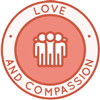
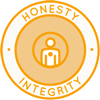
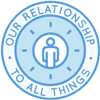
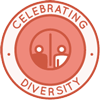
SHARE
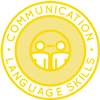
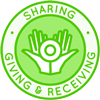
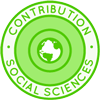
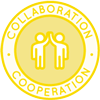
PLAY
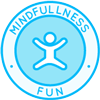
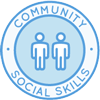
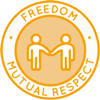
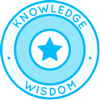
OPEN SOURCE TEACHING METHODOLOGY SUMMARIES
Montessori | Waldorf | Orff | Reggio | Multi-Intelligence | Bloom's Taxonomy | Study Tech | I-WE
INDEX OF ALL THE ONE COMMUNITY OPEN SOURCE LESSON PLANS
THE WORLD'S LARGEST ONLINE FREE EDUCATION RESOURCE ARCHIVE
RELATED CONTENT AND OTHER RELATED RESOURCES
We're building this resource section. Click here if you have a suggestion or resource for this page.
WHO WE ARE
MAIN OPEN SOURCE HUBS
EDUCATION COMPONENTS
CURRICULUM OUTLINES
- Core Curriculum
- Collaboration and Cooperation
- Communication and Language Skills
- Community, Family, and Social Skills
- Contribution, Global Perspectives, & Social Science
- Diversity, Differences, and Similarities
- Freedom and Celebrating Other Perspectives
- Honesty and Integrity
- Interconnectedness & Our Relationship to All Things
- Knowledge and Wisdom
- Love, Connection, and Compassion
- Mindfulness and Fun
- Sharing, Giving, and Receiving
LESSON PLANS
- Lesson Plans How-to
- Beliefs Lesson Plan
- Caring and Kindness Lesson Plan
- Civilization Lesson Plan
- Cognition Lesson Plan
- Communication Lesson Plan
- Consciousness Lesson Plan
- Content and “Our Inner World” Lesson Plan
- Contribution Lesson Plan
- Cooperation and Collaboration Lesson Plan
- Cosmos Lesson Plan
- Courage Lesson Plan
- Creativity Lesson Plan
- Diversity Lesson Plan
- Dreams Lesson Plan
- Emotional States Lesson Plan
- Energy Lesson Plan
- Fall Lesson Plan
- Form and “Our Outer World” Lesson Plan
- Freedom Lesson Plan
- Happiness Lesson Plan
- Harmony Lesson Plan
- Highest Good Lesson Plan
- Honesty and Integrity Lesson Plan
- Human Body Lesson Plan
- Humility Lesson Plan
- Individuality Lesson Plan
- Information Lesson Plan
- Matter & Materials Lesson Plan
- Movement and Development Lesson Plan
- Nature Lesson Plan
- Open Source Lesson Plan
- Opposites Lesson Plan
- Outer Space Lesson Plan
- Personal Growth Lesson Plan
- Planet Earth Lesson Plan
- Quality and Quantity Lesson Plan
- Reality Lesson Plan
- Recreation and Relaxation Lesson Plan
- Relative & Dimensional Space Lesson Plan
- Sharing Lesson Plan
- Signs and Symbols Lesson Plan
- Social Relationships Lesson Plan
- Spring Lesson Plan
- Summer Lesson Plan
- Time Lesson Plan
- Winter Lesson Plan
- Work Lesson Plan
 One Community
One Community








